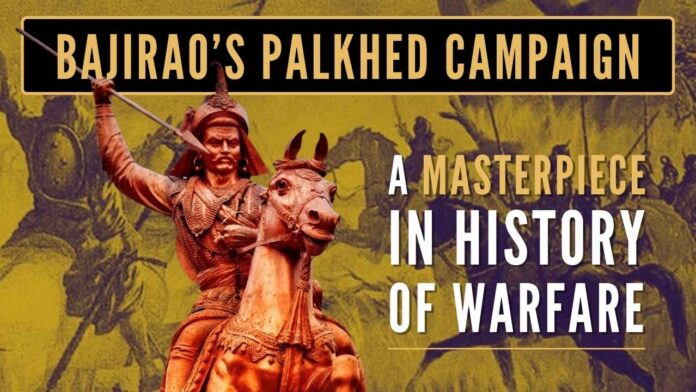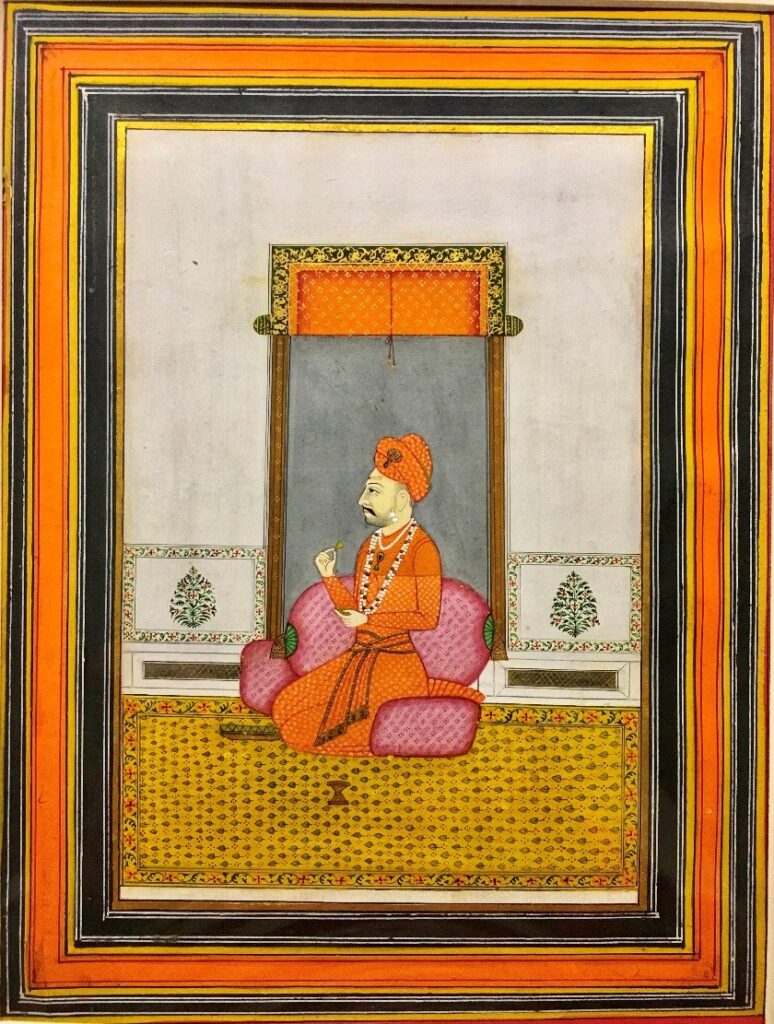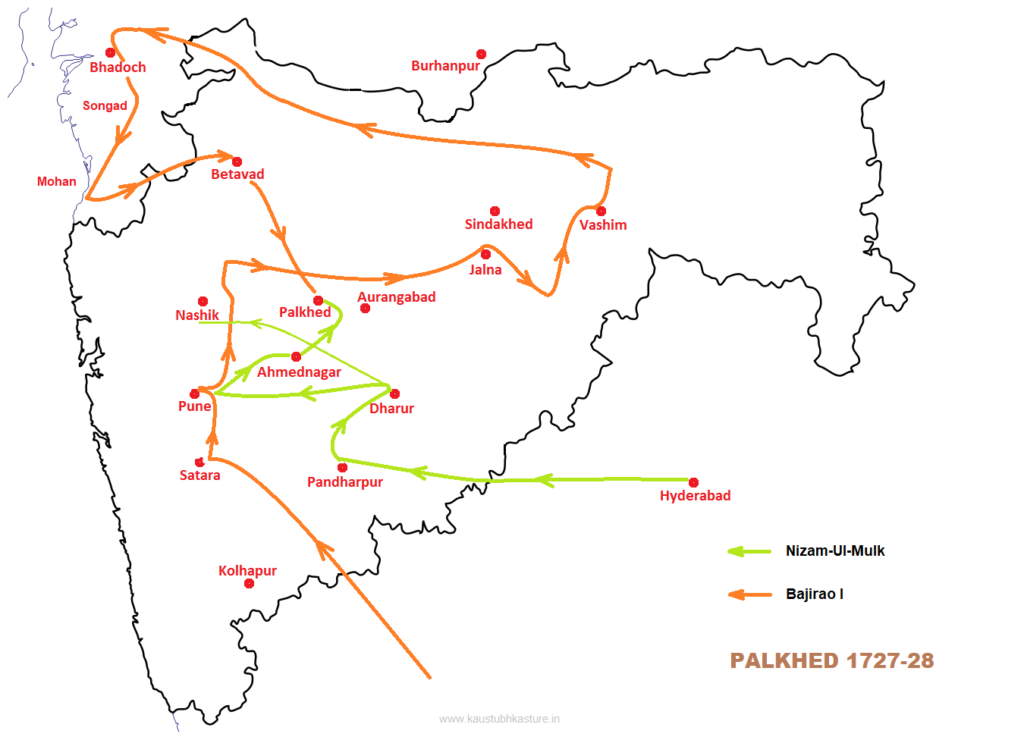
Introduction
The slant history writing of Marxist historians has always maligned the glorious past of India. The distortion of facts in a way suitable to its own agenda is one of the main unwritten tenets of Marxist historiography.
The medieval period in Indian history is marked by the torturous rule of Islamic invaders. The Mughals, under Aurangzeb, who was the most powerful amongst them, forcibly converted Hindus and razed thousands of temples. In this era of darkness, a ray of light, in the form of Chhatrapati Shivaji arose in the land of the mighty Sahyadris.

The Marathas began their journey of establishing the Hindavi Swarajya in 1646 under Chhatrapati Shivaji. Several great warriors and administrators laid their lives to make the Marathas, a formidable power in the Indian sub-continent.
One such warrior was Peshwa Bajirao Ballal or Bajirao I, as he is commonly known. As the Prime Minister of Chhatrapati Shahu, Bajirao was the first Maratha general who marched on Delhi with an army and terrified the Mughals with his strength.[1]

Peshwa Bajirao fought several battles and remained undefeated till his last breath. But the battle of Palkhed was the most important and special battle in his lifetime.
Today, February 25th is the 294th anniversary of this strategically important battle.
Prelude of the Palkhed Campaign
In 1726, the Nizam of Hyderabad, Mir Qamaruddin Khan, also known as Nizam-ul-Mulk Asaf Jah I, began undermining the power of Chhatrapati Shahu.
The Nizam utilized the tussle between Chhatrapati Shahu of Satara and his cousin Chhatrapati Sambhaji II of Kolhapur, both of whom laid the claim to the Maratha throne.

Nizam started supporting Chhatrapati Sambhaji II which infuriated Chhatrapati Shahu. The Nizam further decided to halt the rights of Chauth and Sardeshmukhi, which were agreed upon in a treaty between the Mughal Emperor and Chhatrapati Shahu in 1719.
By mid-1727, Bajirao had made many chiefs in Karnataka surrender to him. He also asked Chhatrapati Shahu to break off negotiations with the Nizam on the Chauth and Sardeshmukhi issue.
The Palkhed Campaign
In October 1727, Chhatrapati Shahu declared war upon the Nizam-ul-Mulk. The Nizam readily accepted this challenge. He kept his movements entirely confidential and tricked the Marathas by marching on Junnar and Pune after giving out that he was going to Aurangabad. Pune fell to the Nizam. The Nizam along with his Maratha commanders ravaged the city and nearby areas.
Chimaji Appa was given the task to protect Chhatrapati Shahu on the strong fort of Purandar. Bajirao on the other hand, along with his trusted lieutenants Malharrao Holkar, Ranoji Shinde, Pilaji Jadhavrao, and Davalji Somvanshi left for a lightning campaign into the Nizam’s territory.
Bajirao created havoc in the Nizam’s territories around Aurangabad and Jalna. He defeated Aiwaz Khan, an able lieutenant of the Nizam-ul-Mulk. To drive away from the Nizam from Pune, Bajirao made a feint towards Burhanpur, the principal Mughal center in the north. He rightly calculated that his sudden descent upon Burhanpur would bring the Nizam out of Pune.
Bajirao had kept a close eye on the Nizam’s movements through Chimaji Appa. Nizam’s occupation of Pune cost him a lot. His allies Chhatrapati Sambhaji II and Chandrasen Jadhav lacked an efficient army as well as sufficient funds. He marched towards the Godavari in mid-February 1728 with the objective of defeating Bajirao in an open plain, where his artillery could be effectively employed.
The Marathas proved to be more alert and agile than their enemy. This helped them to entangle the Nizam. The Nizam left his heavy artillery and crossed the Godavari to find Bajirao near Aurangabad. While on his way to Aurangabad, the Nizam found himself suddenly entrapped in a maze near Palkhed, a difficult hilly place where he could not even get food and water for his army.

The Marathas quickly surrounded the Nizam from all sides and cut him off from the outside world. He was neither able to communicate with anyone nor arrange for food and supplies for his army. In a few days, the Nizam realized that he had no way out. Aiwaz Khan and Chandrasen appealed to Bajirao for relief. Bajirao took hostages before allowing the Nizam to move towards Mungi Shevgaon, where the terms of the settlement were to be decided.
Aftermath
On March 6th, 1728, a treaty was signed between the two parties. As per the treaty:
- Chhatrapati Shahu was recognized as the sole Maratha ruler. All administrative or diplomatic measures for the government of the six Mughal Subahs should be executed through the Marathas.
- The Nizam should withdraw his protection from Chhatrapati Sambhaji II and allow him to proceed to Panhala. He should not be allowed to collect Chauth from districts north of the Krishna.
- The previous grants of Swarajya and Sardeshmukhi should be confirmed. The balance revenue was to be paid to Chhatrapati Shahu.
- The prisoners captured by Turk-Taz Khan out of the Maratha Swarajya should be sent back.
In this way, despite his army being intact, the Nizam-ul-Mulk was brought to his knees by Bajirao. While describing the battle of Palkhed, eminent historian Sir Jadunath Sarkar called Peshwa Bajirao, ‘a heavenly-born cavalry leader’.
British Field Marshal Bernard Montgomery, who led the UK to victory in WWII, writes about the battle of Palkhed, “They (the Marathas) were at their best in the eighteenth century, and the Palkhed campaign of 1727-28, in which Bajirao outgeneralled Nizam-ul-Mulk, is a masterpiece in strategic mobility.”
The battle of Palkhed was one of the most important battles in the history of the Marathas. This battle proved that the Marathas were a direct threat to the Mughal empire as they emerged superior to all the regional powers in the Indian sub-continent.[2]
We have allowed Marxist historians and others with colonial mindsets to defile our glorious history for far too long. It is really unfortunate that the story of one of the world’s greatest cavalry generals was tarnished and reduced to a fictional romantic drama by Bollywood as well. It is high time that the truth is told.
Note:
1. Text in Blue points to additional data on the topic.
2. The views expressed here are those of the author and do not necessarily represent or reflect the views of PGurus.
Reference:
[1] The Era of Bajirao Paperback – Dec 12, 2016, Amazon.in
[2] New History of the Marathas, Volume II Hardcover – Amazon.in
PGurus is now on Telegram. Click here to join our channel and stay updated with all the latest news and views
For all the latest updates, download PGurus App.
- Aurangzeb, as he really was! - November 9, 2022
- Peshwa Bajirao’s Palkhed campaign: A masterpiece in the history of warfare - February 24, 2022








Peshwa Bajirao was one of the prominent warrior who was no less than the character of our Veer ” Chatrapati Shivaji Maharaj .” He was the one who had won not just the land of Bharat from the Mughal invaders but also gave a message of Swarajya first than any kind of self- interest .
Thanks for giving us the right knowledge of our great warriors . A big applause for you .